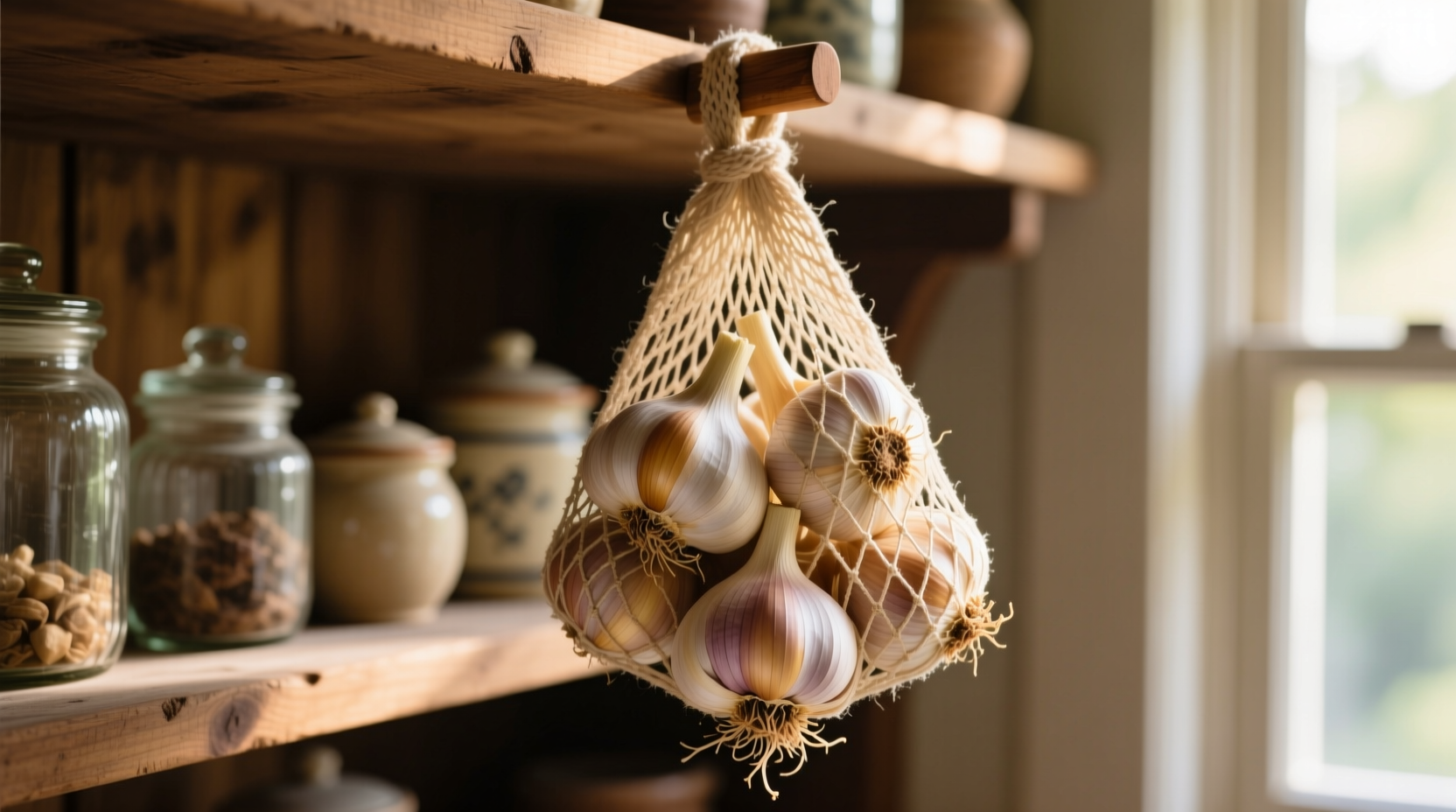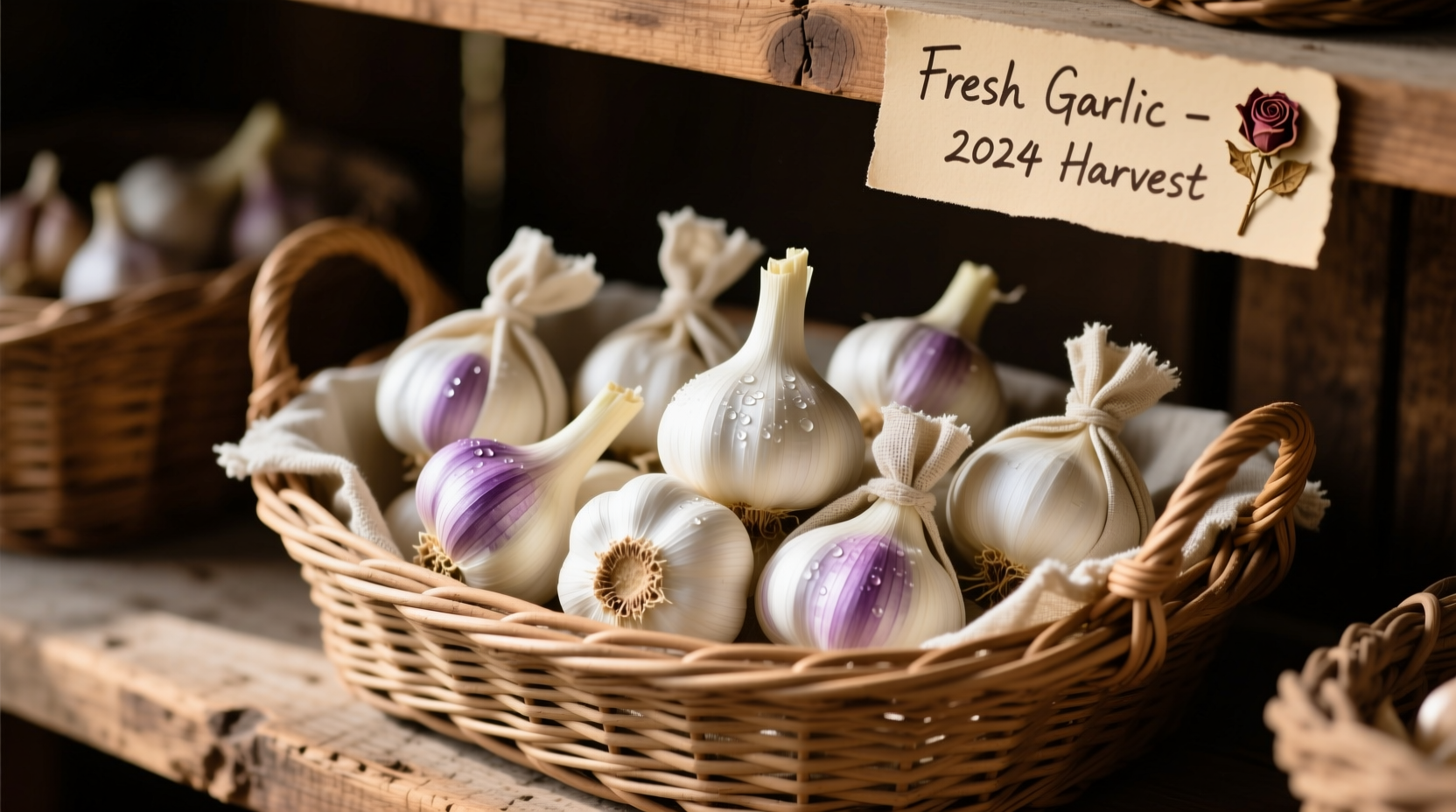Why Your Garlic Keeps Spoiling (And How to Fix It)
Garlic should stay firm, dry, and aromatic for months—not sprouting, softening, or molding within weeks. Most home cooks make critical storage mistakes that cut garlic's shelf life by 75%. The secret isn't complicated equipment—it's understanding garlic's biological needs after harvest.

Immediate Action: What to Do With Grocery Store Garlic Today
That net bag from the supermarket? It's the first problem. Commercial garlic comes coated in food-safe wax and packed in non-breathable materials that trap moisture. Within 48 hours of purchase:
- Remove all packaging immediately
- Discard any cloves showing soft spots or green sprouts
- Wipe bulbs gently with a dry cloth (never wash)
- Store in a ventilated container away from heat sources
This simple intervention extends shelf life from 3 weeks to 3+ months based on USDA agricultural research on Allium sativum preservation.
Optimal Storage Methods Compared
| Storage Method | Shelf Life | Best For | Critical Mistake to Avoid |
|---|---|---|---|
| Mesh bag in dark pantry | 3-6 months | Whole bulbs | Placing near onions (accelerates sprouting) |
| Clay garlic keeper | 2-4 months | Kitchen countertop storage | Using sealed ceramic (traps moisture) |
| Paper bag in cupboard | 1-2 months | Partial bulbs | Folding bag shut (needs air flow) |
| Refrigerator (never recommended) | 7-14 days | Emergency short-term | Causes rubbery texture and mold |
The Science Behind Successful Garlic Storage
Garlic continues metabolic activity after harvest. According to Cornell University's post-harvest physiology research, two factors determine longevity:
- Temperature stability: Fluctuations between 50-65°F (10-18°C) prevent sprouting while maintaining dormancy
- Relative humidity: 60-70% RH allows natural transpiration without moisture buildup
Refrigeration fails because cold temperatures (32-40°F) trigger enzymatic changes that cause cloves to deteriorate rapidly once returned to room temperature—a phenomenon documented in the Journal of Food Science.
Troubleshooting Common Storage Failures
When garlic problems occur, they follow predictable patterns:
- Sprouting green shoots: Exposure to light or temperatures above 70°F—move to darker, cooler location immediately
- Soft, mushy cloves: Moisture exposure—discard affected cloves, wipe remaining bulbs with vinegar solution
- White mold development: Humidity above 75%—add silica gel packets to storage container
- Bitter flavor development: Stored near strong odors—reset with fresh container and activated charcoal
Advanced Techniques for Serious Home Cooks
For those preserving homegrown garlic or bulk purchases:
- Curing before storage: Air-dry harvested bulbs for 3 weeks in shaded, breezy area to develop protective skin layers
- Freezing single cloves: Peel cloves, freeze on tray, then transfer to airtight container (use within 12 months)
- Vacuum sealing limitation: Only effective for frozen garlic—room temperature vacuum sealing creates anaerobic conditions that risk botulism
Remember: Once cloves are separated from the bulb, use within 10 days regardless of storage method. The protective membrane deteriorates rapidly after separation, as confirmed by University of California's agricultural extension studies.
When Storage Goes Wrong: Safety First
Distinguish between normal aging and dangerous spoilage:
- Safe to use: Brown papery skin, firm cloves, slight drying at root end
- Discard immediately: Slimy texture, strong ammonia smell, dark spots, or any signs of mold
Never attempt to salvage questionable garlic—foodborne illness risks outweigh any potential savings. The FDA's food safety guidelines explicitly warn against consuming spoiled alliums due to potential bacterial growth.











 浙公网安备
33010002000092号
浙公网安备
33010002000092号 浙B2-20120091-4
浙B2-20120091-4